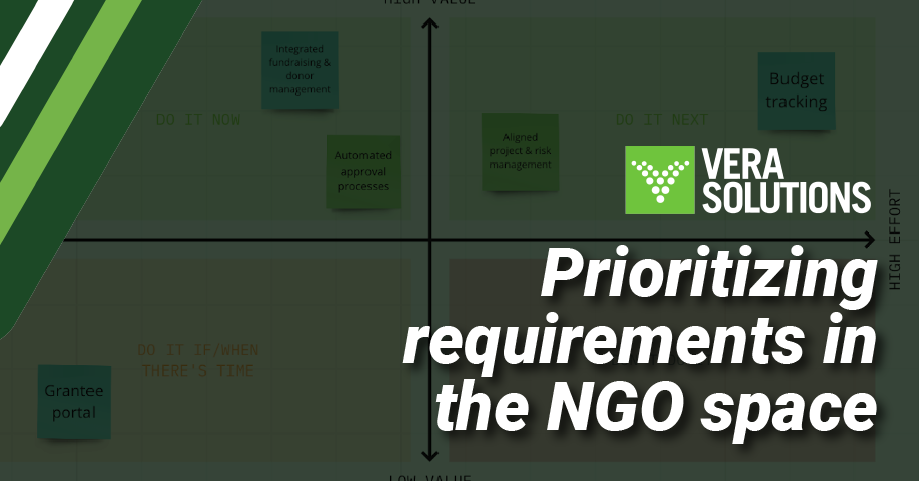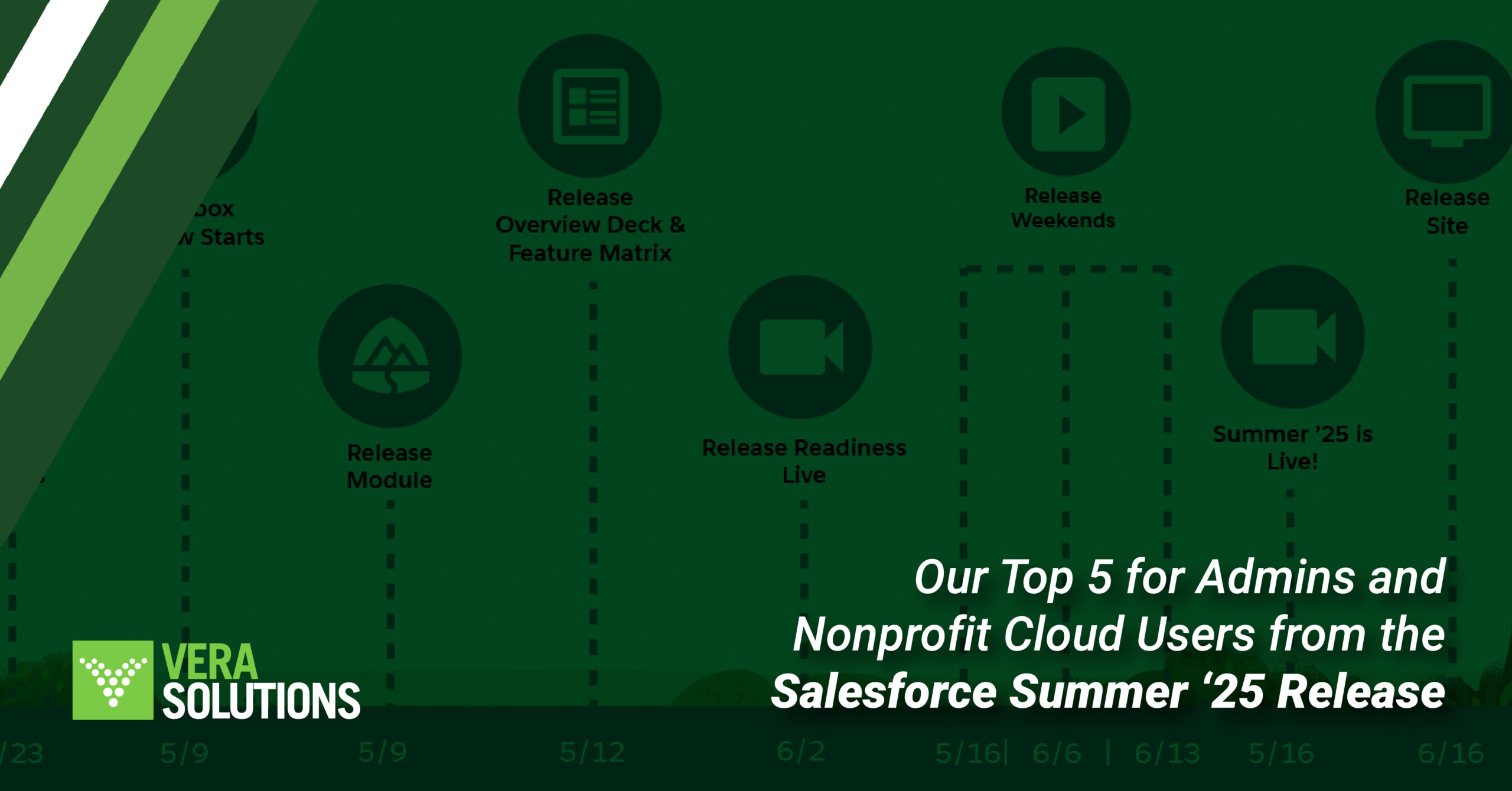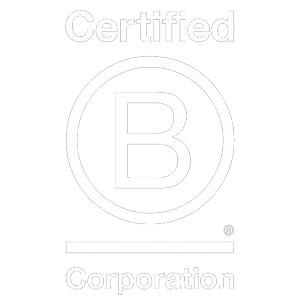Nonprofit organizations are increasingly turning to technology to streamline and automate everyday processes – from strategic planning and fundraising to program management and impact measurement to project and service delivery. Yet resource constraints often mean that organizations can’t implement everything they want at once. Prioritizing requirements is crucial for ensuring that the technology meets your organization’s specific needs while being feasible to implement.
Vera Solutions builds on 13 years of experience to help nonprofits prioritize high-value requirements before we start building. This means weighing the value and effort of each proposed requirement to understand where it falls on the spectrum from ‘must-have’ now to ‘nice-to-have’ in the future.
The 2×2 Prioritization Method is a simple and effective decision-making tool used to prioritize requirements based on their value and effort required. Value represents the potential positive outcome or significance of the proposed requirement. Requirements with higher value are usually those that can bring substantial benefits or address critical issues for the organization. Effort reflects the level of resources, time, and energy required to implement the requirement. Items with lower effort are generally easier and quicker to execute.
By weighing these two dimensions, nonprofits can ensure they’re investing their resources wisely, thereby maximizing the platform’s impact and optimizing their overall technological capabilities for better operational efficiency and mission fulfillment. Here are some questions that might guide you in identifying where certain requirements fit on the value-effort matrix:
Questions to evaluate the VALUE of proposed requirements:
- Does the proposed requirement address a specific need and/or challenge of our nonprofit organization?
- Does the requirement directly enhance our organization’s operations and efficiency?
- Does the requirement help us reach a broader audience and increase our impact?
- Is the requirement a consensus among multiple stakeholders and end users?
- Will the requirement streamline the organization’s reporting and analytics capabilities? How does it help us measure and improve our performance?
- Does the requirement integrate well with our existing systems and tools, or will it require significant changes to our infrastructure?
- How user-friendly is the proposed feature, and what kind of training and support will be provided to our staff to ensure successful adoption?
- Does the requirement ensure compliance with data privacy and security regulations, promising the safety of our beneficiaries and donors?
- Given the proposed requirements, what is the total cost of ownership for implementing and maintaining the technology platform, including any ongoing fees or licensing costs?
- Have similar organizations successfully implemented and benefited from these requirements, and can we see any case studies or references?
Questions to evaluate the EFFORT required:
- What is the scope of the proposed solution, and how does it align with our organization’s overall goals and objectives?
- What out-of-the-box features exist that might be able to respond to the requirement (either in part or in full)?
- How much configuration or customization is required to meet the requirement? The more customization proposed, the more effort that will be required.
- How much time and effort will be required to train our staff members to effectively use the proposed solution?
- Will there be a need to migrate data from existing systems to the new platform, and how complex will this process be?
- Are there any dependencies on external vendors or third-party integrations that may impact the effort required for implementation?
- How much time and effort will be needed to ensure data security, privacy compliance, and backup procedures for the new platform?
- What level of technical support and assistance will be provided by the technology vendor during the implementation process?
- Are there any potential risks or challenges that could arise during implementation, and what contingency plans are in place to address them?
- Have similar nonprofit organizations implemented a similar solution before, and can we learn from their experiences to better estimate the effort required?








